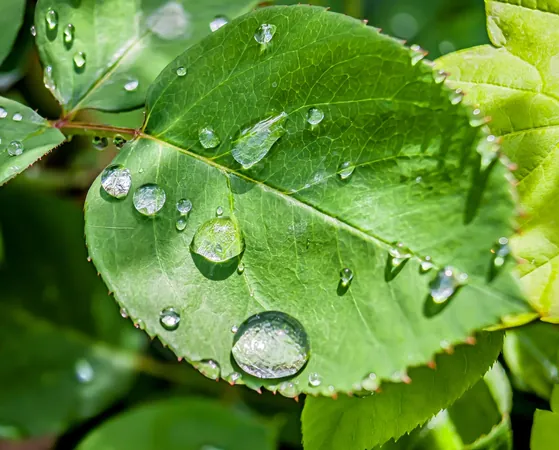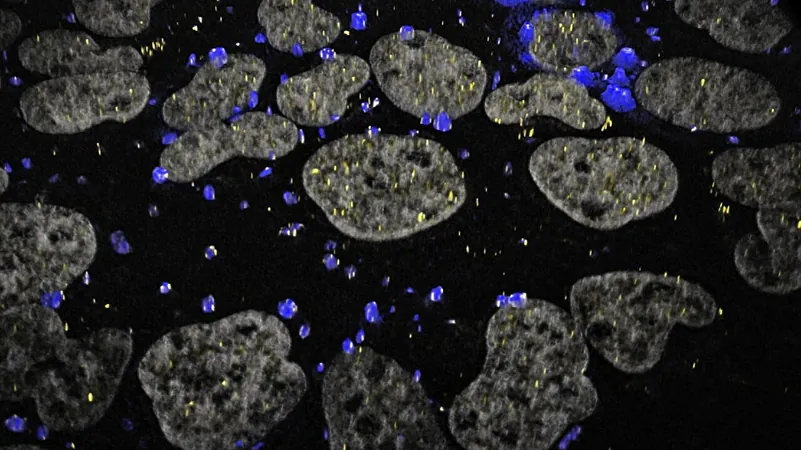
Unlocking the Secrets of Plant Communication: How Hidden Messengers Drive Growth
2025-08-26
Author: Daniel
Plants: More Alive Than They Seem
While plants may appear tranquil and unmoving, they are bustling with internal communication, constantly balancing energy capture with water conservation. For years, scientists have speculated about the internal messengers that guide this intricate process, but the specifics remained elusive—until now.
A Breakthrough Discovery
A groundbreaking study from Penn State has finally unveiled the identity of these mysterious signals. This research not only sheds light on a long-standing enigma but also paves the way for innovative strategies in agriculture and enhancing plant resilience.
Mastering the Food-Water Equation
According to Professor Sarah Assmann, the discovery significantly deepens our understanding of how plants synchronize their internal chemical reactions—crucial for energy production—with their external surroundings, vital for growth and survival.
The Role of Guard Cells
Guard cells on the leaf surface are the regulators of stomata, tiny openings that manage the intake of carbon dioxide and the escape of water vapor. These microscopic gateways allow plants to 'eat' by absorbing CO2, but they also risk dehydration.
The Constant Tradeoff
Professor Assmann explains, "There's always a tradeoff for terrestrial plants between maximizing CO2 intake, essential for photosynthesis, and releasing water vapor, which could lead to fatal dehydration. We suspected there had to be some messenger guiding guard cells in this life-or-death tradeoff."
Identifying the Messengers
The exciting findings point to sugars—sucrose, glucose, and fructose—as key messengers, along with maleic acid. These metabolites create a feedback loop that intricately connects the plant's energy production with stomatal regulation.
Innovative Research Techniques
The Penn State team experimented with Arabidopsis thaliana (thale cress) and fava beans, extracting apoplastic fluid from leaves under different light conditions. With red light boosting photosynthesis, researchers were able to isolate and identify 448 chemical compounds in the fluid—a significant leap in understanding plant signaling.
Sugar's Role in Water Management
Subsequent experiments demonstrated that sugars can actively promote stomatal opening under red light. This not only increases CO2 uptake but also modifies water release, confirming their crucial role as messengers that aid in water management.
Redefining Plant Signaling
The Nature Plants study emphasizes that stomatal regulation isn't solely dependent on hormones as previously believed. Instead, metabolic by-products themselves can serve as robust signaling molecules, enhancing our comprehension of plant-environment interactions.
A Focus on Resilience
As climate change increasingly subjects plants to drought and heat stress, understanding their resilience becomes vital. "Plants must adapt to their environment, as they can't move," notes Assmann. This research aims to uncover the molecular mechanisms behind plant resilience, from the microscopic level to overall plant physiology.
Collaborative Research Efforts
This pivotal project brought together a consortium of researchers from renowned institutions, including Penn State, The Hebrew University of Jerusalem, Nagoya University, and others, with funding from the National Science Foundation.
Conclusion: A New Understanding Awaits
With this study published in *Nature Plants*, the journey to fully understanding plant communication has taken a significant step forward—opening wide doors for agricultural innovation and enhancing crop productivity in an age of environmental challenges.




 Brasil (PT)
Brasil (PT)
 Canada (EN)
Canada (EN)
 Chile (ES)
Chile (ES)
 Česko (CS)
Česko (CS)
 대한민국 (KO)
대한민국 (KO)
 España (ES)
España (ES)
 France (FR)
France (FR)
 Hong Kong (EN)
Hong Kong (EN)
 Italia (IT)
Italia (IT)
 日本 (JA)
日本 (JA)
 Magyarország (HU)
Magyarország (HU)
 Norge (NO)
Norge (NO)
 Polska (PL)
Polska (PL)
 Schweiz (DE)
Schweiz (DE)
 Singapore (EN)
Singapore (EN)
 Sverige (SV)
Sverige (SV)
 Suomi (FI)
Suomi (FI)
 Türkiye (TR)
Türkiye (TR)
 الإمارات العربية المتحدة (AR)
الإمارات العربية المتحدة (AR)